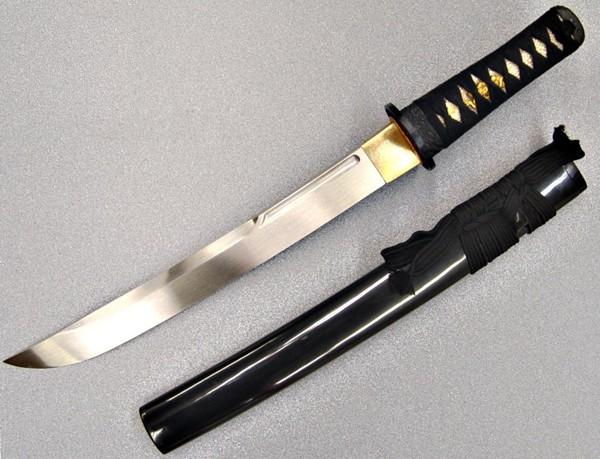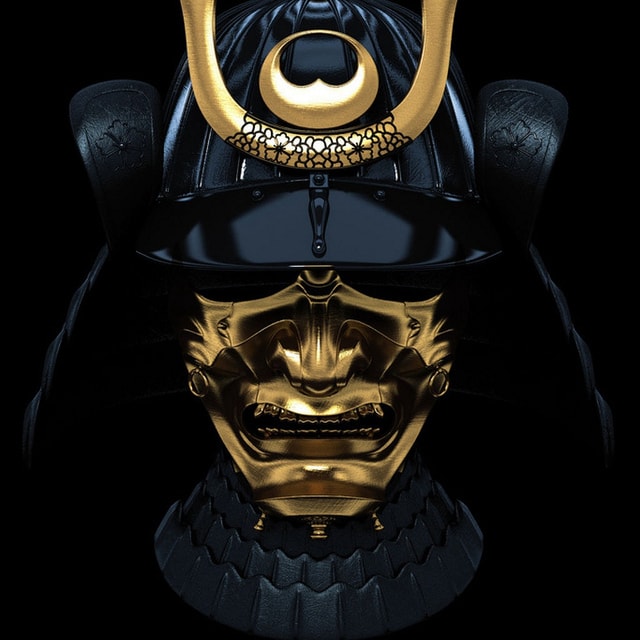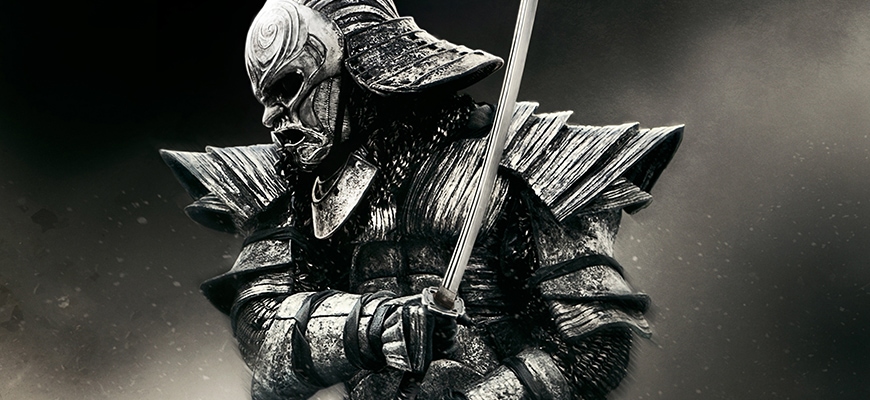Who was the Samurai Warrior?
 Deadly. Smart. Skilled. Disciplined. Loyal. Precise. Feared. Respected. These are just a few of the ways that history has described the samurai warrior. The mighty samurai is a warrior legend, and for over 200 years stories of the samurai trickled down from generation to generation. The story of the samurai will continue to live on because of how interesting and unique the samurai were. We are going to discuss some interesting characteristics of the samurai, and at the end of this article we will show you how to add a piece of the samurai spirit to your daily life. Before we go any further into the details of a Samurai Warrior, here is a very quick crash course on the Samurai…
Deadly. Smart. Skilled. Disciplined. Loyal. Precise. Feared. Respected. These are just a few of the ways that history has described the samurai warrior. The mighty samurai is a warrior legend, and for over 200 years stories of the samurai trickled down from generation to generation. The story of the samurai will continue to live on because of how interesting and unique the samurai were. We are going to discuss some interesting characteristics of the samurai, and at the end of this article we will show you how to add a piece of the samurai spirit to your daily life. Before we go any further into the details of a Samurai Warrior, here is a very quick crash course on the Samurai…
Samurai Quick Reference Guide:
1. The term samurai originally meant “those who serve in close attendance to nobility”
2. The samurai were members of a powerful military caste in feudal Japan in the 12th century.
3. Samurai were servants to the most powerful political and social men of the era.
4. As servants of the great lords, the samurai backed up the authority of the shogun and gave him power over the emperor.
5. The samurai loyally protected their masters as well as enforced their orders.
6. The samurai were bound by a code of honor, discipline and morality known as Bushido or “The Way of the Warrior.”
7. If a samurai violated this code of honor (or was captured in battle), a gruesome ritual suicide was the chosen method of punishment and atonement.
8. The ritual suicide of a samurai or Seppuku can be either a voluntary act or a punishment.
9. Either way the ritual suicide of a samurai is generally seen as an extremely honorable way to die.
10. The samurai would dominate Japanese government and society until 1868.
There you have it, you now know just enough about Samurai’s to be dangerous in a conversation.
To sum it up even further, the samurai were highly trained, well equipped elite warriors whose weapons and tactics are still studied today.
What we are going to focus on next in this article is what the samurai warriors would use as their weapons of choice, and why they used them.
The Warrior Spirit

Samurai, 1866. Photograph by Felice Beato
Japanese swords are the weapons that have come to be synonymous with the samurai. Samurai believed that their warrior spirit was contained within their swords. The sword was the weapon of choice for the samurai. The samurai sword has evolved over the centuries, starting from a straight blade and moving to a curved blade and then ultimately the katana was chosen. The samurai also carried smaller companion swords known as the wakizashi and the tanto. Wearing a long sword (katana) or (tachi) together with a smaller sword such as a wakizashi or tanto became the symbol of the samurai, this combination of swords is referred to as a daisho (literally “big and small”).

*Katana, Wakizashi, and Tanto on display
Samurai Weapons and Tactics Quick Reference

1. The Samurai were experts in a wide variety of combat skills including hand-to-hand combat, ground fighting, fighting with arms (swords, bows, spears) and fighting from horseback.
2. The elite Samurai warrior trained for many years in the art “Bujutsu.”
3. We are going to focus on the samurai’s weapon of choice, the sword.
4. The samurai’s swords were yet another important aspect of his life
5. Samurai often named their swords, in a dedication of devotion.
6. Samurai believed that their warrior spirit was contained within their swords.
7. The samurai wore two swords, a wakizashi and a katana.
8. The samurai’s katana was his primary weapon of self-defense
9. Samurai’s also carried a smaller wakizashi sword.
10. The samurai often used his wakizashi in close quarter combat situations and even during ceremonial, ritual suicide if the warrior had broken one of the 7 virtues of bushido.
11. When worn with the Japanese katana, the pair (of katana and wakizashi) is then referred to as daisho.
12. Their swords were made by master sword smiths and quality tested on the corpses of criminals.
13. The forging of a genuine Samurai sword is a tedious, labor-intensive process that begins with a specialized Japanese steel called “tamahagane.” Through this smelting process, a steel is produced that consists of a carbon count that is balanced throughout the steel making it the optimal steel for fashioning a sword. Master Swordsmiths then begin the process of folding the steel begins and can be folded up to 16 times. This process helps to remove any remaining impurities, while also creating alternating layers that greatly increase the toughness and durability of the blade.
14. The length of a Samurai sword has varied over time, but the modern version is typically around 40 inches overall with a 28 inch blade.
Japanese Sword Making
The Edge of Choice for the Samurai
We have now spent some time learning about who the samurai were, and also what kind of weapons they carried. We know that the samurai were a serious group of warriors who were highly skilled in weapons and tactics. We also know that they had a deep, almost spiritual, bond with their swords. We learned that making a samurai sword is an extremely labor intensive job that takes the hands of a master swordsmith. Knowing how serious the bond with their swords went, and also knowing what they used their swords for, one could suggest that the samurai would have wanted to possess the best, most capable sword available to them. For the most part, the samurai chose the tanto style blade as their blade of choice for their weapons. This was not a coincidence, this was a thought out strategic choice.
Body Armour of the Time

Japanese samurai armor was typically made up of many small parts and a wide variety of materials. Steel, leather, and wood typically form the protective plating, which may be composed of many small sections laced together using leather or silk cord. Samurai armor was designed to be strong, protective, flexible and terrifying.
Being that the body armor being warn was very heavy duty, the samurai needed a weapon that would excel at piercing through tough materials. The tanto blade was the desired choice for Japanese long and short swords.
Characteristics of the Tanto Blade:

The tanto blade has a high point with a flat grind, leading to an extremely strong point that is perfect for stabbing into hard materials. The thick point of the tanto blade contains a lot of metal near the tip, so it is able to absorb the impact from repeated piercing that would cause most other knives to break.
The front edge of the tanto blade meets the back edge at an angle, rather than a curve. As a result, the tanto blade does not have a belly, which is sacrificed in exchange for a stronger tip. However, it’s extremely strong point allows it to be used in tough situations where piercing hard materials is required.

Japanese Tanto Knife
The Japanese tanto is a Japanese dagger carried by samurai. Specifically, the Japanese tanto is one with a guard that has all of the fittings used on swords. The Japanese tanto blade rarely exceeds 12 inches in length and usually accompanying a katana. The tanto is much more decorated and has unusual fittings than the larger swords. The Japanese tanto was designed primarily as a stabbing instrument, but the edge can be used to slash as well.
Become One with the Samurai…

If the OTF knife existed back in days of the samurai, I would like to believe that they would have wanted to incorporate it into their war arsenal. Unfortunately that is something we will never actually know. What we do know is that the samurai preferred the tanto blade, and we at Raven Crest Tactical also favor the tanto blade as our preferred blade style. Here is why..
To be 100% honest, part of our love for the tanto is based on the aesthetic beauty of the tanto blade. The sharp curves and beveled edges give the blade a sleek, strong and aggressive look.

Raven Crsst Tactical Non Serrated Tanto Blade

Raven Crest Tactical Serrated Tanto Blade
Don’t get us wrong, the tanto blade isn’t just a blade for the eyes. The tanto blade is extremely useful for cutting or penetrating tough materials, just ask the samurai. For our OTF knives we offer two variations on the tanto blade, serrated and non serrated. We could go on for days on which is the better option (serrated vs non-serrated), but that ultimately is decided by one’s personal preference.
Now, our OTF knives may not be forged in the fires by an ancient and wise knifesmith, nor is our knives sharpness tested on the corpses of dead criminals; but every one of our knives is hand assembled and hand sharpened using both modern and traditional tools and techniques. These key features not only place our OTF knives up with other elite knife makers, but it follows the traditional ways in which a samurai’s sword was made.
The fact of the matter is this, no matter which style of tanto blade you choose when you carry a Raven Crest Tactical tanto you are carrying with you a piece of the samurai warrior spirit.

There is no way we could have written this article without a lot of help.. We thank all those who help contribute to this article.
References:
https://www.youtube.com/watch?
http://listverse.com/2013/08/
http://en.wikipedia.org/wiki/
http://en.wikipedia.org/wiki/
http://www.trueswords.com/
http://getasword.com/blog/125-
https://yokaihigh.files.

